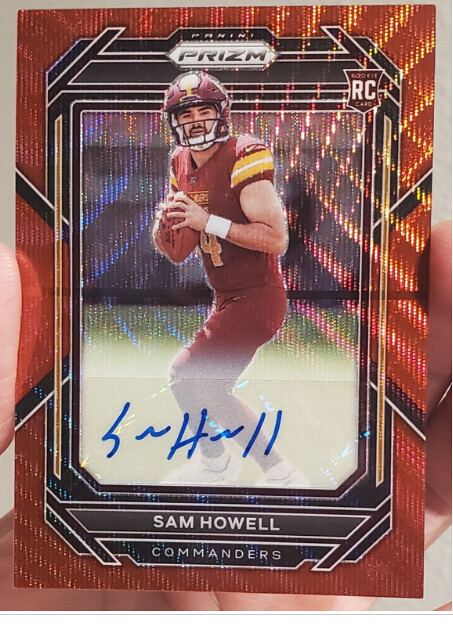When it comes to sports card grading, collectors often focus on obvious issues like corner wear, surface scratches, and centering.
However, one often overlooked flaw that can severely impact a card’s grade is the print line.
Print lines are subtle manufacturing defects that can appear during the production process, and while they may not seem like a big deal to the untrained eye, they can have a significant effect on a card’s final grade.
In this article, we’ll explore how print lines affect grading, why they matter, and how you can detect them before sending your cards for grading.

What Are Print Lines?
Print lines are small, often faint lines that appear on the surface of a card as a result of the printing process.
These lines can run vertically or horizontally and are typically caused by issues in the printing machinery during production.
Print lines are most commonly found in modern cards, particularly those with foil or chrome finishes, where the printing process is more complex and prone to minor imperfections.
While print lines don’t usually damage the card’s structure, they are considered surface flaws that can hurt a card’s overall aesthetic and, ultimately, its grade.

Why Do Print Lines Affect Grading?
Professional grading services like PSA, BGS, and SGC place a significant emphasis on the condition of a card’s surface when determining its grade.
Even though print lines are a result of manufacturing defects, they are still considered surface flaws, similar to scratches or scuff marks.
In many cases, print lines are visible only under specific lighting or magnification, but grading companies are trained to catch these imperfections.
A card with noticeable print lines can be downgraded even if it has perfect centering, sharp corners, and a clean surface otherwise.
This can be frustrating for collectors, especially when they feel the defect is out of their control, but the reality is that print lines can make or break the final grade.

How Much Do Print Lines Affect the Grade?
The extent to which a print line affects a card’s grade depends on its severity and visibility.
For example, a faint print line that is only visible under magnification may not lower a card’s grade by much, but a visible print line that is obvious to the naked eye will almost certainly result in a significant grade reduction.
Grading companies often dock points on the surface score when print lines are present.
In some cases, this can be the difference between a Gem Mint (10) and a Mint (9) grade, or worse.
This drop in grade can have a substantial impact on a card’s value, especially for high-end cards where even a slight decrease in grade can mean losing thousands of dollars.

Detecting Print Lines Before Sending for Grading
One of the best ways to avoid disappointment when grading is to inspect your cards for print lines before submitting them.
Print lines can be tricky to spot, especially on glossy or reflective card surfaces, but there are a few methods you can use to detect them.
First, hold your card under bright, direct light and tilt it at various angles to see if any lines become visible.
Print lines often show up under certain angles where light reflects differently off the card’s surface.
You can also use a magnifying glass or jeweler’s loupe to examine the card more closely.
If you spot a print line, especially one that’s noticeable without magnification, it’s a good idea to temper your expectations regarding the grade.
In some cases, you may even decide to skip grading altogether if the print line is severe enough to significantly lower the card’s value.

Are Print Lines Becoming More Common in Modern Cards?
Over the last few years, many collectors have noticed an uptick in print line issues, particularly in modern cards from high-end sets like Topps Chrome, Panini Prizm, and Select.
This is partly due to the increasing complexity of printing processes for modern cards, which often feature foil finishes, holographic elements, and intricate designs.
While older cards were printed on simpler stock, modern cards require more advanced machinery, and this can lead to more frequent production defects like print lines.
Unfortunately, grading companies still penalize these defects, even though they are becoming more common.
For collectors of modern cards, it’s essential to be aware of the prevalence of print lines and take them into account when deciding which cards to submit for grading.

Print lines may seem like a minor issue, but they can have a significant impact on the final grade of your sports cards.
Even though these flaws are a result of the manufacturing process, grading companies treat them as surface imperfections and adjust grades accordingly.
If you’re serious about collecting or investing in sports cards, it’s important to thoroughly inspect your cards for print lines before sending them for grading.
Using proper lighting and magnification tools can help you catch these lines early and avoid disappointment when you receive the grade.
While print lines can be frustrating, knowing how to spot and manage them can save you from significant drops in value, and in some cases, help you make more informed decisions about which cards to grade.
Happy collecting!








